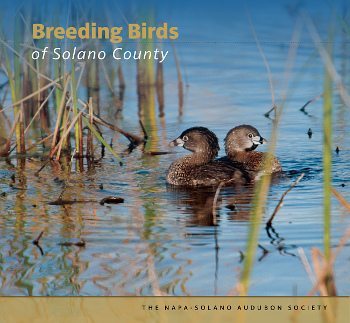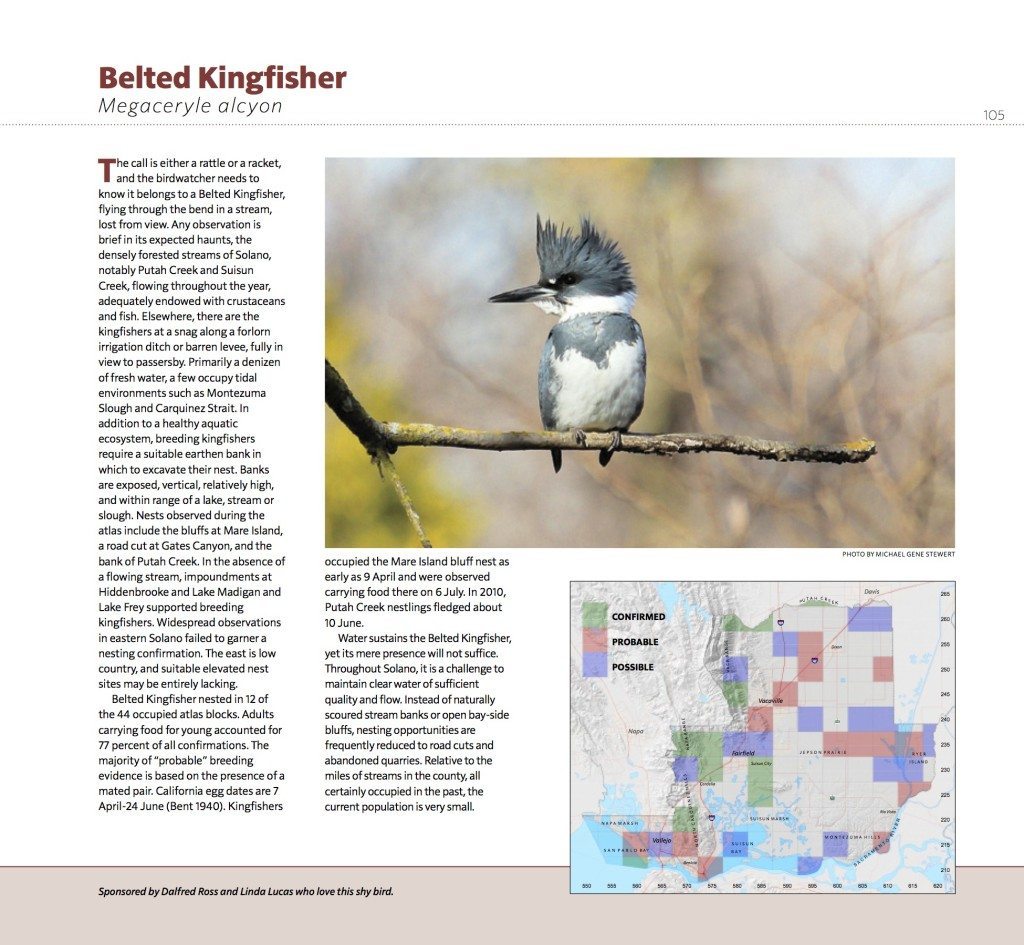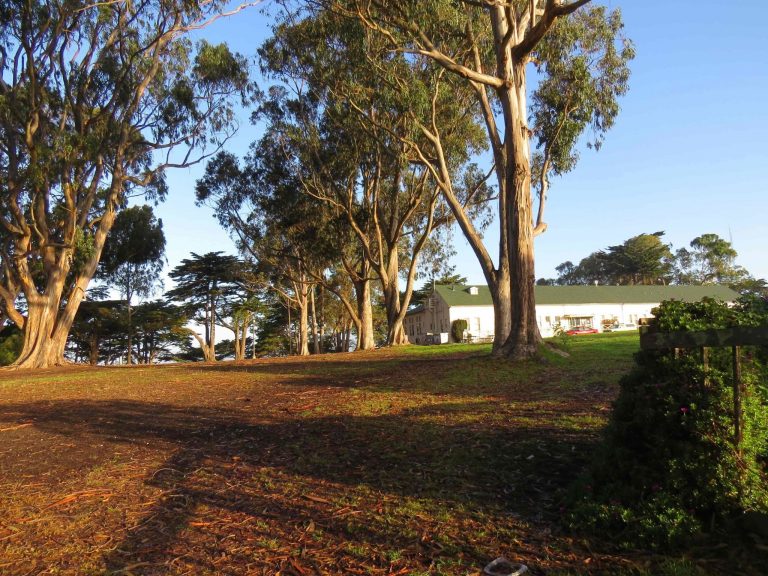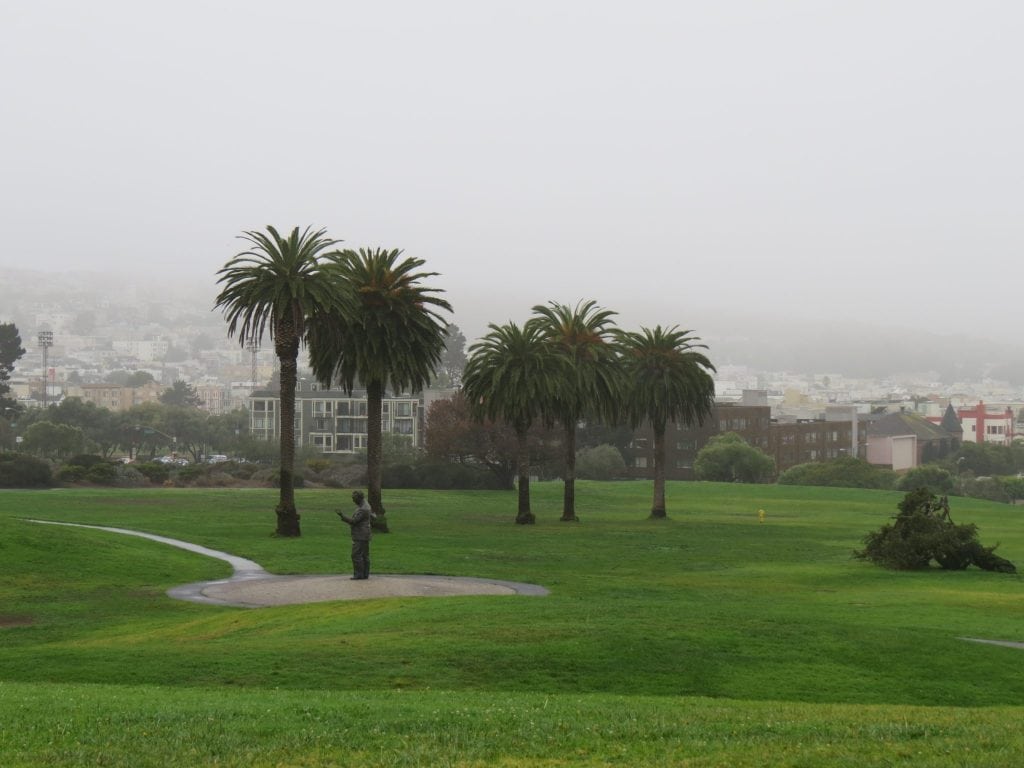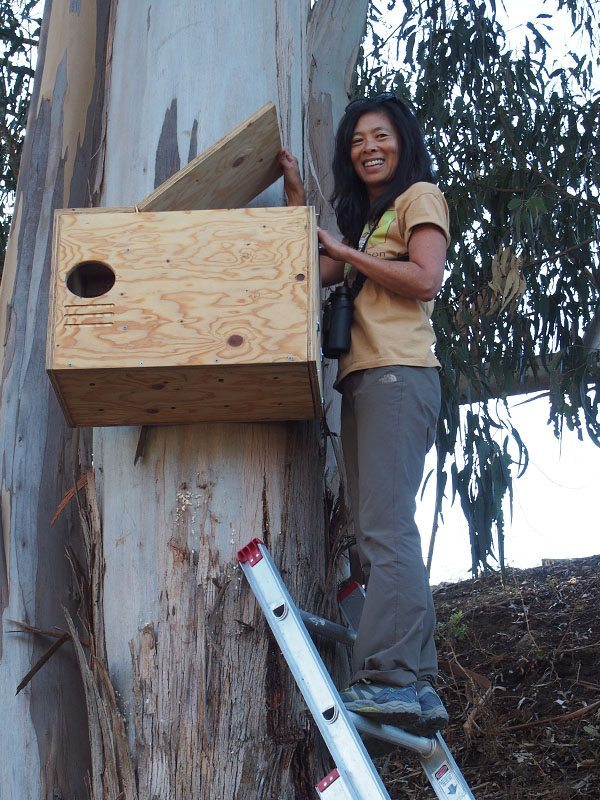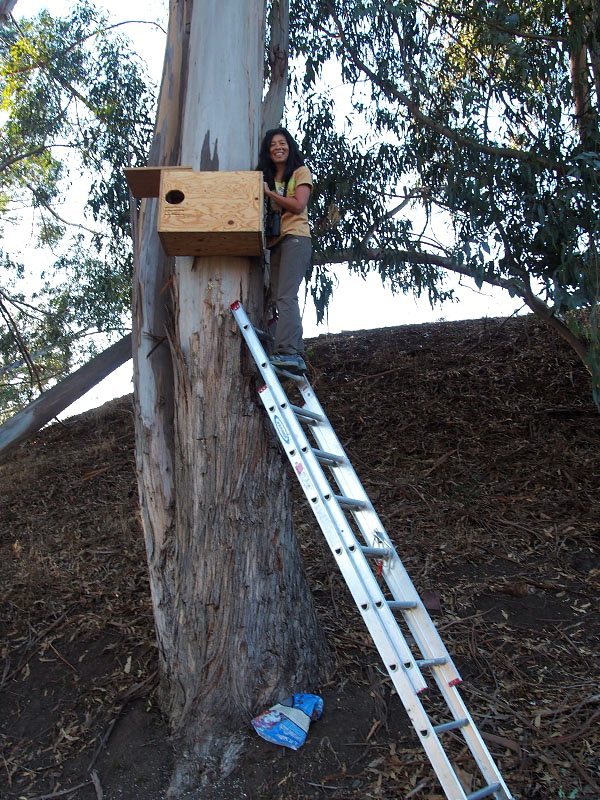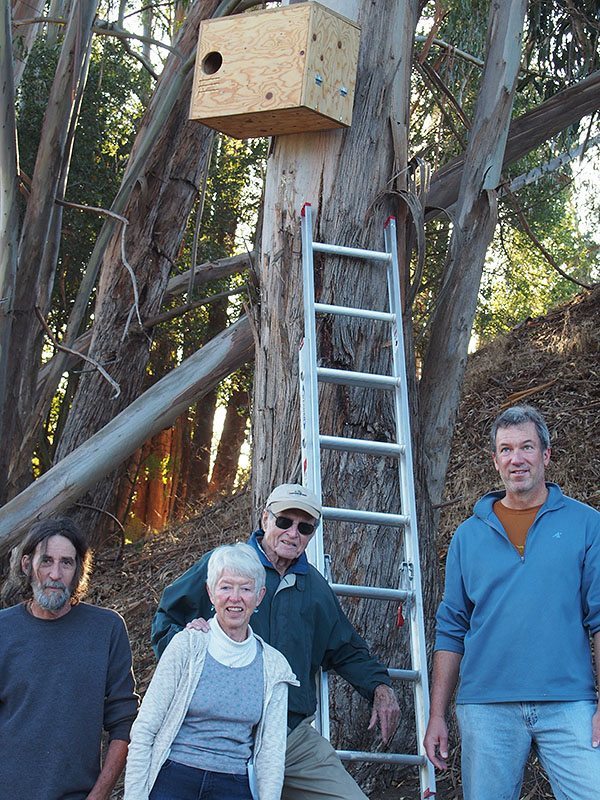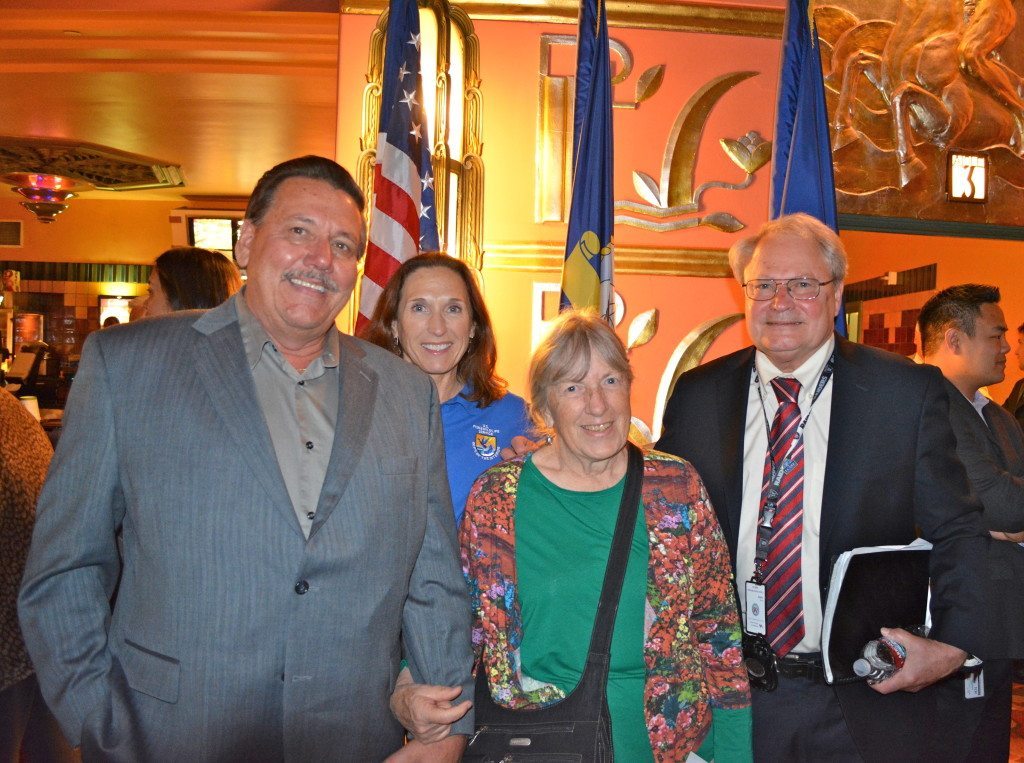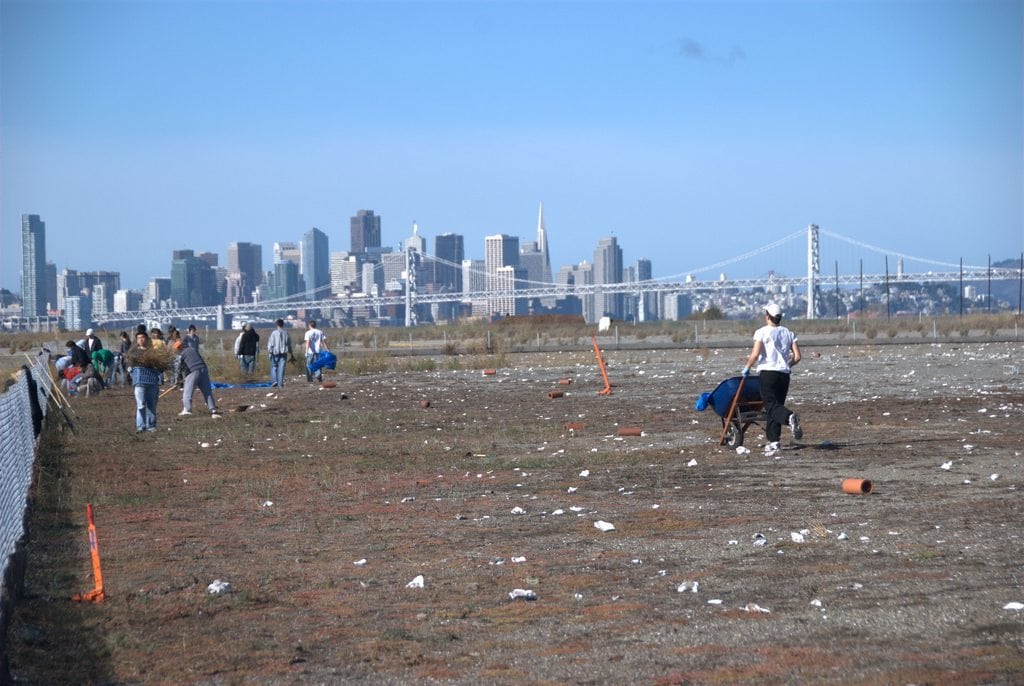Christmas Bird Count by boat, Part 2
By George Peyton
The longtime skipper of the North Boat, Ed Jepsen, was an excellent sailor and navigator, and even taught classes for the U.S. Coast Guard. However, one day many years ago, we sailed into a phenomenon that could have led to the death of Ed’s then-wife.
It was a clear and cold day for the Oakland Christmas Count, and the North Boat was headed north from the Bay Bridge paralleling the eastern shore of Treasure Island.
Ed’s wife loved the outdoors and birds and had come to love being out in the Jepsens’ boat. But by that time her health confined her to a wheelchair, where she was enjoying the expansive view from the back deck.
Suddenly, the prow of the North Boat lurched substantially upward into the air as we emerged from the calm waters behind Treasure Island and encountered a very strong rising tide coming into the Bay from the Golden Gate.
 Scaup on SF Bay / Photo by U.S. Geological Survey
Scaup on SF Bay / Photo by U.S. Geological Survey
We all grabbed onto something to steady ourselves. But right away I noticed that the wheelchair did not have its brakes fully engaged and was rolling rapidly toward the rear of the boat — with Ms. Jepsen in it.
I remember jumping and grabbing the arm of the wheelchair. Fortunately one of our other bird spotters did likewise, just before it hit the back railing, where it could have thrown Ms. Jepsen out and into the water.
We could hardly believe what had happened and how fortunate we were that a tragedy had not occurred. Naturally our minds were at least temporarily off of counting birds.
Another extremely memorable North Boat experience took place on another cold, clear day that was quite windy. We had rounded the south side of Yerba Buena Island and passed under the Bay Bridge heading north on the San Francisco side, scanning the small rocky beaches at the base of the island’s steep cliffs for birds.
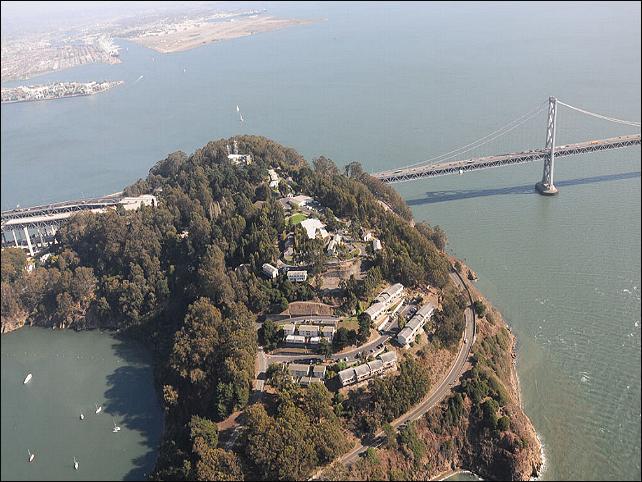 Yerba Buena Island, with Oakland and Alameda in the background and San Francisco across the bridge to the right
Yerba Buena Island, with Oakland and Alameda in the background and San Francisco across the bridge to the right
Suddenly, Pete White called out that he had seen something strange on the beach that looked a little like a human body. He asked Ed Jepsen to come about and get closer, so that we could better see what was on that small beach.
I ran over to the railing and, sure enough, my binoculars showed a dead body washed up on the beach.…


